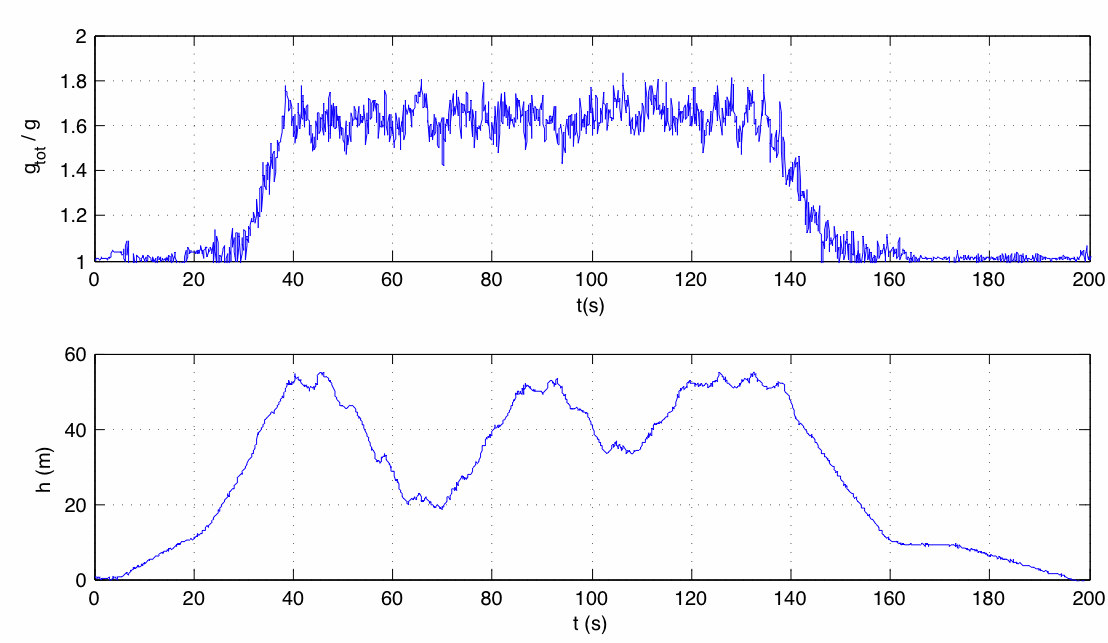


Himmelskibet - Star Flyer
- Number of Swings: 12 (each with 2 seats)
- Elevation: 80 m
- Star diameter: 14 m
- Chain length: 8 m
- Turns/minute: 10
- Vertical speed: 2.2m/s
|
|

- Observe the ride as it starts moving. What factors determine the angle of the swings?
- How do you expect the angle to depend on the number of people (0, 1 or 2) in a pair of swings?
- The forces acting on the rider are the force, mg, of gravity and the force, T, from the swing acting along the line of the chain. Use this information to draw a free-body diagram.
- What is the the acceleration of the rider during different parts of the ride?
- Take a look at a Movie
of Himmelskibet in action. Use the movie to estimate the time for a full circle
- The graphs below show accelerometer and elevation data for the whole Himmelskibet to
The top graph shows the ratio | (a-g) / g |.
Use the graphs to estimate the horizontal acceleration during the main part of the tour.
- How fast must the swings move to experience this acceleration for the rotation time above?

See also the graphs over the relations between the angle,
and rotation period, acceleration and speed.
Gravity and acceleration - for planets and rides
The top of the ride is inspired by the astronomer
Tycho Brahe, whose accurate
observations helped Johannes Kepler formulate the laws of planetary
motion, paving the way for Isaac Newton and his laws of motion; Newton
stood "on the shoulder of
giants" (as stated by himself). Newton discovered that the same laws of motion
could be used to describe objects on earth and in the sky, including
amusement rides and planets.
That the angle is the same for swings with 0, 1 and 2 riders is a
small-scale version of a
classical experiment
by Eötvös.
It illustrates the "equivalence principle"- that the "gravitational
mass" (in m g) is the same as the "inertial mass"
(in m a). In the case of the swings in Himmelskibet, the angle is
given by arctan (m|a|/m|g|) = arctan (|a/g|), which is independent of
mass.
The equivalence principle was also illustrated by the early physics
giant, Galileo Galilei, in the famous experiment of comparing the time
of falling for cannon balls of different size. Much later, the
equivalence principle inspired Albert Einstein to consider the general
theory of relativity.
Read more.
http://physics.gu.se/LISEBERG/tivoli/himmelskibet.html
Ann-Marie Pendrill, 2010-01-01







